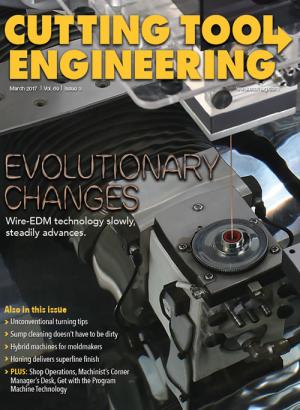Lathe machinists have always had it tough. There’s the risk of cut fingers that comes with long, stringy chips. Bar feeder-induced noise and vibration—leading to problems with surface finish and premature hearing loss. The endless bending over to change inserts and drills, often in tight quarters, and never mind rooting around in the chip pan for parts that went flying during cutoff. Plus, with the advent of multitask machines, lathe operators must now learn about milling.
Fortunately, there’s plenty of good application advice available from cutting tool specialists and equipment providers. Following are six best-practice tips you might not have heard of yet, ones that will help you improve throughput and reduce costs.
Stay Cool
High-pressure coolant (HPC) isn’t a gimmick. It’s been proven to greatly extend tool life and dramatically boost productivity. That’s because HPC is extremely effective at removing heat from the cutting zone. The result is that cutting parameters can, and should, be increased to generate sufficient heat for the metal-removal process to function properly. On the surface, this may seem counterintuitive—why eliminate heat just to create more? But when you consider that cutting speeds with HPC are often five times that of conventional flood coolant, it’s a no-brainer.
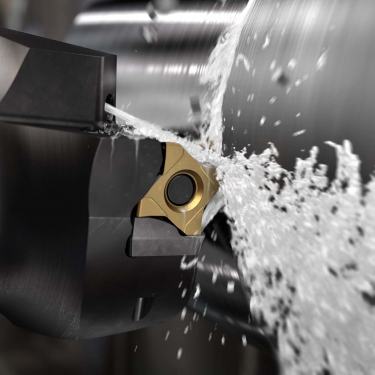
High-pressure coolant is extremely effective at removing heat from the cutting zone.
The Sandvik Coromant CoroTurn 300 (shown) is ported to supply high-pressure cutting fluid directly
above and below the cutting zone. All images courtesy of Sandvik Coromant.
If your shop lacks the funds for an HPC system, don’t despair. Surprising gains are still there for the taking if the cutting fluid—even applied at low pressure—is properly directed. A number of cutting tool providers have recognized this and are producing tool bodies, or holders, with integrated cutting fluid ports. These holders can be ported to supply cutting fluid directly above and below the cutting zone, dramatically reducing heat. Goodbye, plastic hoses and copper lines!
Control the Crib
Cost per edge is important, but it’s not the end game. Choosing the right turning tool for the job is. Yet many metalworking professionals are concerned about out-of-control toolcribs, where the number of insert brands and grades seems to grow with each passing year, with some of those inserts probably dating back to the shop’s first CNC machine. Adding to inventory bloat are enthusiastic sales people who stop by with the latest tool body and pack of inserts and add another handful of part numbers for the crib to manage.
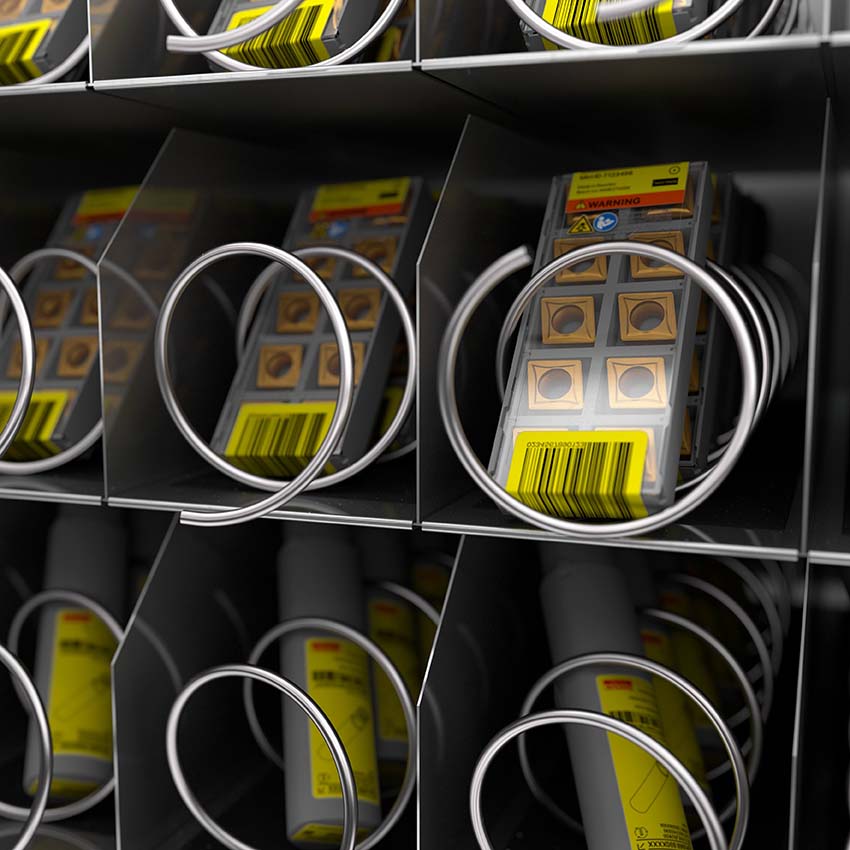
An effective tooling strategy requires working closely with suppliers
in a controlled manner, bringing in new technology to address specific challenges.
Granted, these ad-hoc solutions often bring improvement to tool life or productivity, but an effective tooling strategy requires working closely with suppliers in a controlled manner, bringing in new technology to address specific challenges.
That upcoming order of Inconel shafts, for example, is sure to cause you grief. Rather than applying a general-purpose 80° diamond-shaped insert, because you’re trying to avoid adding to the cutting tool roster, invite your trusted tooling adviser(s) for some test cuts early on—and document the results.
Optimize, Don’t Maximize
Once you’ve found the desired turning tool, don’t run it into the ground. Achievement of maximum tool life is a worthwhile goal, but not at the cost of process stability. If an insert can be pushed to produce 30 pieces before it wears or breaks, change it at 25 pieces, even if the edge still looks like there’s some life left. In addition, if you have a cutting tool that seems to last forever, kick up the feeds and speeds. The most cost-effective lifespan for any tool is 15 minutes when running with the recommended speeds and feeds for a particular workpiece material. So, if tools are lasting hours, you’re losing money.
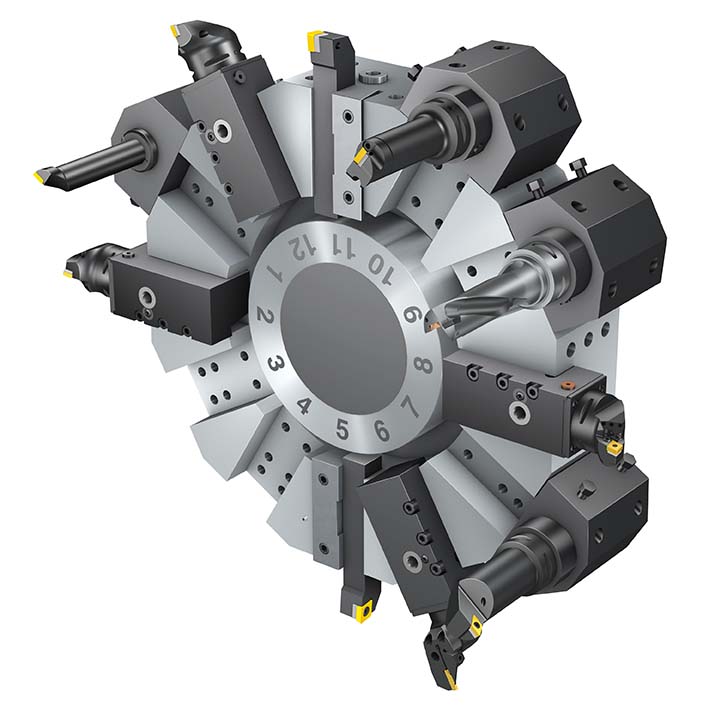
If possible, change all the tools in the turret
at the same time, at regularly defined intervals.
ne often overlooked bit of fine-tuning is to change all the tools in the turret at the same time, at regularly defined intervals. This minimizes the amount of door opening and, properly implemented, provides predictable lengths of time where an operator can leave a machine unattended to do other work. Of course, this requires careful planning and documentation of anticipated tool life and the cutting parameters that have been tried so far.
Some tools are in the cut much longer than others, and no amount of feed or speed tweaking will get them to wear out at the same time. They can, however, be scheduled for coordinated changeover.
If, for example, the rougher looks ready to fail at 18 minutes, the finisher at 67 and the grooving tool at 39, then:
A) change the roughing tool at 15 minutes;
B) replace the rougher and groover at 30 minutes;
C) change the rougher again at 45 minutes; and
D) swap all three tools at the 1-hour mark.
Keep It Clean
We’ve all been scolded about not keeping our work areas clean enough at one time or another. Wipe down the sheet metal, top off the way oil and empty the chip tray. Proper machine tool maintenance should be a priority in any shop. Yet one often-overlooked maintenance item is the tool bodies themselves. When neglected, inserts may shift during cutting, often leading to disastrous results.
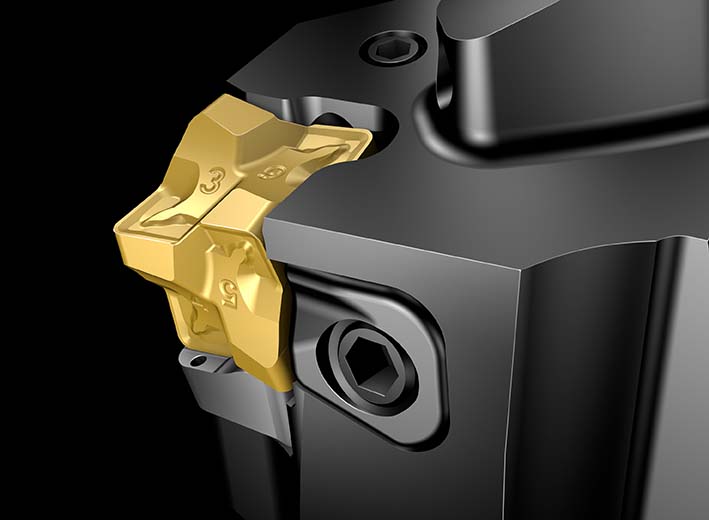
Regular inspection of the insert pocket is critical to ensuring effective turning.
Regular inspection of the insert pocket is paramount. Check for signs of wear and deformation. Look for dimples or cracks in the shim, and ensure the clamp, screw and pin are still securely holding the insert. Tool bodies should
also be taken apart on a regular basis—perhaps once every 20 to 30 tool changes—depending on use. Remove any metal fines that might be lodged in the seating areas, apply a small amount of grease to the moving parts, smooth small deformations and dents with a file, and don’t be afraid to recycle a tool body when wear becomes unacceptable.
Write It Down
What’s your documentation strategy? If you’re still scribbling things down on tool setup sheets, it’s time to get digital. Shops of all sizes can afford to scatter a handful of PC workstations or tablets across the production floor, if not placing one at each machine.
Job “diary” templates should be established to keep track of events, and employees should be encouraged to use them. Doing so helps eliminate the risk of tribal-knowledge loss the next time a top employee moves on.
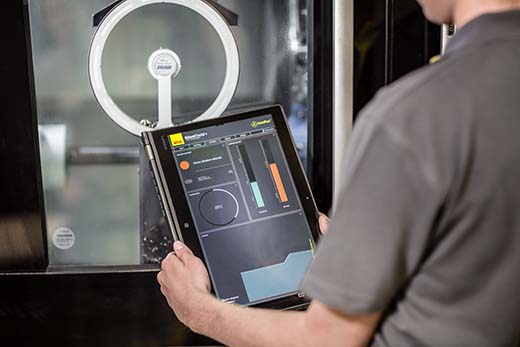
Shops of all sizes can afford to scatter a handful of PC workstations or tablets
across the production floor, if not one at each machine, to enable proper documentation.
Even for those shops that haven’t taken the step of implementing a centralized tool-management database, apps that calculate productivity, provide educational materials, identify inserts and perform other functions are available to help make a machinist’s life easier. And making cloud-based tool libraries available streamlines setup and programming operations, and gives machinists ready access to application information.
Continuously Train
With today’s competition comes an increased need for lean. Some manufacturers have responded by eliminating their process-engineering function, relying instead on the shop floor to do the job planning, programming, tool selection and other process-development activities once done in the front office.
Lathe operators—indeed, all manufacturing folks—bear a heavy burden these days. They need all the tools, techniques and advice available to them.
They also need continuous training. Most cutting tool manufacturers and many machine tool distributors
offer online, in-house and on-premise educational programs, as do many vo-tech schools and community colleges. If shops are to realize maximum efficiency, management must budget for training to help employees reach their full potential—and, most importantly, to retain them.
There’s plenty more. The Sandvik Coromant website, for example, suggests the following turning application advice:
- Minimize tool pressure by using a cutting depth larger than the tool nose radius.
- Always run at the highest possible surface speed to extend tool life.
- Use wiper inserts when finishing to impart fine surface finishes at maximum feed rates.
- Large lead angles reduce notching, thin the chip and allow for high feed rates.
Also, don’t forget to pick the brains of cutting and machine tool application engineers. They visit hundreds of job shops each year and are a great source of information.
Contact Details
Related Glossary Terms
- computer numerical control ( CNC)
computer numerical control ( CNC)
Microprocessor-based controller dedicated to a machine tool that permits the creation or modification of parts. Programmed numerical control activates the machine’s servos and spindle drives and controls the various machining operations. See DNC, direct numerical control; NC, numerical control.
- coolant
coolant
Fluid that reduces temperature buildup at the tool/workpiece interface during machining. Normally takes the form of a liquid such as soluble or chemical mixtures (semisynthetic, synthetic) but can be pressurized air or other gas. Because of water’s ability to absorb great quantities of heat, it is widely used as a coolant and vehicle for various cutting compounds, with the water-to-compound ratio varying with the machining task. See cutting fluid; semisynthetic cutting fluid; soluble-oil cutting fluid; synthetic cutting fluid.
- cutoff
cutoff
Step that prepares a slug, blank or other workpiece for machining or other processing by separating it from the original stock. Performed on lathes, chucking machines, automatic screw machines and other turning machines. Also performed on milling machines, machining centers with slitting saws and sawing machines with cold (circular) saws, hacksaws, bandsaws or abrasive cutoff saws. See saw, sawing machine; turning.
- cutting fluid
cutting fluid
Liquid used to improve workpiece machinability, enhance tool life, flush out chips and machining debris, and cool the workpiece and tool. Three basic types are: straight oils; soluble oils, which emulsify in water; and synthetic fluids, which are water-based chemical solutions having no oil. See coolant; semisynthetic cutting fluid; soluble-oil cutting fluid; synthetic cutting fluid.
- feed
feed
Rate of change of position of the tool as a whole, relative to the workpiece while cutting.
- gang cutting ( milling)
gang cutting ( milling)
Machining with several cutters mounted on a single arbor, generally for simultaneous cutting.
- grooving
grooving
Machining grooves and shallow channels. Example: grooving ball-bearing raceways. Typically performed by tools that are capable of light cuts at high feed rates. Imparts high-quality finish.
- lathe
lathe
Turning machine capable of sawing, milling, grinding, gear-cutting, drilling, reaming, boring, threading, facing, chamfering, grooving, knurling, spinning, parting, necking, taper-cutting, and cam- and eccentric-cutting, as well as step- and straight-turning. Comes in a variety of forms, ranging from manual to semiautomatic to fully automatic, with major types being engine lathes, turning and contouring lathes, turret lathes and numerical-control lathes. The engine lathe consists of a headstock and spindle, tailstock, bed, carriage (complete with apron) and cross slides. Features include gear- (speed) and feed-selector levers, toolpost, compound rest, lead screw and reversing lead screw, threading dial and rapid-traverse lever. Special lathe types include through-the-spindle, camshaft and crankshaft, brake drum and rotor, spinning and gun-barrel machines. Toolroom and bench lathes are used for precision work; the former for tool-and-die work and similar tasks, the latter for small workpieces (instruments, watches), normally without a power feed. Models are typically designated according to their “swing,” or the largest-diameter workpiece that can be rotated; bed length, or the distance between centers; and horsepower generated. See turning machine.
- metalworking
metalworking
Any manufacturing process in which metal is processed or machined such that the workpiece is given a new shape. Broadly defined, the term includes processes such as design and layout, heat-treating, material handling and inspection.
- milling
milling
Machining operation in which metal or other material is removed by applying power to a rotating cutter. In vertical milling, the cutting tool is mounted vertically on the spindle. In horizontal milling, the cutting tool is mounted horizontally, either directly on the spindle or on an arbor. Horizontal milling is further broken down into conventional milling, where the cutter rotates opposite the direction of feed, or “up” into the workpiece; and climb milling, where the cutter rotates in the direction of feed, or “down” into the workpiece. Milling operations include plane or surface milling, endmilling, facemilling, angle milling, form milling and profiling.
- turning
turning
Workpiece is held in a chuck, mounted on a face plate or secured between centers and rotated while a cutting tool, normally a single-point tool, is fed into it along its periphery or across its end or face. Takes the form of straight turning (cutting along the periphery of the workpiece); taper turning (creating a taper); step turning (turning different-size diameters on the same work); chamfering (beveling an edge or shoulder); facing (cutting on an end); turning threads (usually external but can be internal); roughing (high-volume metal removal); and finishing (final light cuts). Performed on lathes, turning centers, chucking machines, automatic screw machines and similar machines.
- wiper
wiper
Metal-removing edge on the face of a cutter that travels in a plane perpendicular to the axis. It is the edge that sweeps the machined surface. The flat should be as wide as the feed per revolution of the cutter. This allows any given insert to wipe the entire workpiece surface and impart a fine surface finish at a high feed rate.



